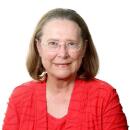Babe Herman Field named for legend
- Share via
In 1986, the Verdugo Little League Field on Cañada Boulevard was renamed for Floyd (Babe) Herman, a native son who led his Glendale High School baseball team to its first playoff competition in 1920.
Herman was drafted right out of high school by a Western Canadian League team, then spent time in the minor leagues before joining the Brooklyn Dodgers, where he set batting records and inspired this city to participate in a campaign to elect him to the Hall of Fame in 1977. Although that campaign and others were not successful, Glendalians chose to honor their hometown hero with a ballpark of his own.
Verdugo Field wasn’t the city’s first Little League field. The first was built in 1951 after George Frederick and Len Joseph appeared before the City Council, seeking a place for children to play.
The council initially opposed the request, but the men persisted, and Frederick was appointed the city’s first Little League commissioner.
Donations poured in, including $1,000 from the Jewish War Veterans, and local businesses offered materials at bargain prices. The new stadium, in Pacific Park, put the two organizers $9,000 in debt, according to Frederick’s obituary in the Dec. 6, 1994, Glendale News-Press.
Some 500 youngsters showed up at the first tryouts in spring 1951, and a few weeks later, the two men had paid their debts. The Little League program grew rapidly.
Verdugo Field was built in 1953 across the street from Verdugo Park, on city property with money and labor supplied by the Little League, according to the Los Angeles Times, Jan. 9, 1986. It was named for the city’s founders.
Six years later, Verdugo Field became the home of a fictional Little League team, the Bobcats, for a Disney production “Moochie of the Little League” starring Kevin Corcoran as Moochie, a little boy who spends most of the season on the bench. It was filmed in early July 1959 and aired later that year.
By 1986, there were seven fields in the city, used by more than 100 Little League teams for girls and boys. That was the year Parks and Recreation Commissioner George McCullough suggested to the City Council that they rename Verdugo Field for Herman.
“Babe Herman has been around town for a long time,” McCullough told the Los Angeles Times in 1986. “I thought it would be very apropos to name a Little League diamond after him.”
The field was dedicated that March. According to a News-Press account of that day, Herman’s longtime friend, Carroll Parcher, introduced Herman as “undoubtedly the most talented athlete who ever attended Glendale High.”
He added that Herman was a four-sport letterman each year of his high school career. When the field was dedicated, Herman still held six Dodger records, including the single-season batting average mark of .393. Herman died the next year.
Elise Kalfayan, whose son Greg began his Little League career at Babe Herman Field in 1998, has many fond memories of that ballpark.
She would love to see “Moochie of the Little League.”
“A Little League classic filmed on our home field,” she said.
So far her efforts to find it on DVD or VHS have been futile.
“It is sometimes aired on the Disney Channel,” she said.
KATHERINE YAMADA’S column runs every other Friday. To contact her, call features editor Joyce Rudolph at (818) 637-3241. For more information on Glendale’s history, visit the Glendale Historical Society’s web page: www.glendalehistorical.org; call the reference desk at the Central Library at (818) 548-2027; or call (818) 548-2037 for an appointment to visit the Special Collections Room at Central from 10 a.m. to noon and 1 to 3 p.m. Tuesdays and Thursdays.
READERS WRITE
As a child growing up in Glendale, Marilyn Harder Yerkes looked forward to going to Brotherton’s Farmhouse Restaurant on Sundays after church. (A Special Collections directory from the 1950s placed it at 126 E. Chevy Chase Drive.)
“It was an old Craftsman-style house with many dining areas — kind of cozy. I remember having to wait a long time outside under the trees [probably 10 minutes, which is a long time for a kid]. It was down-home cooking, fried chicken or fried rabbit, with mashed potatoes and gravy. The fried rabbit was delicious,” she recalled. It was also unusual. “We could always have chicken at home.”
Yerkes, who now lives in Grass Valley, grew up on Virginia Avenue in a Gregg-built house.
“Alice Lee Gregg did most of their design plans. It was very well built and had a great flow,” said Yerkes, who graduated from Hoover High School in 1961.
Her brother, Bob Harder, and Bob Gregg were friends all through school as well as in Boy Scouts together, she added.
If you have questions, comments or memories to share, please write to Verdugo Views, c/o News-Press, 221 N. Brand Blvd., 2nd Floor, Glendale, CA 91203. Please include your name, address and phone number.
